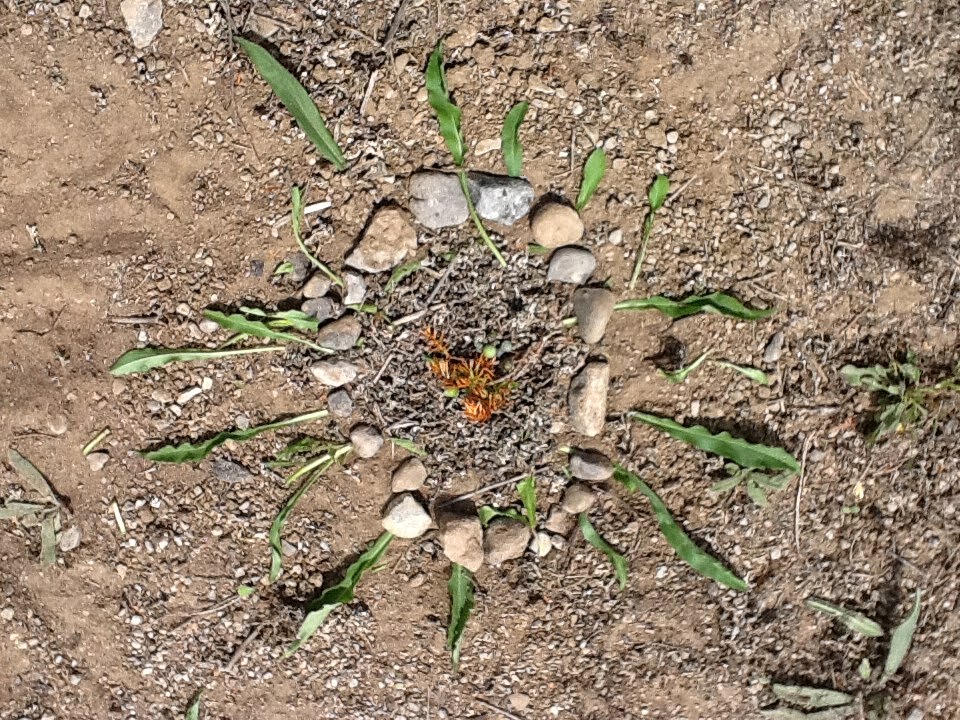After reading this book, we had more focused talks about how scientists are observers and about how they have to slow down and look closely at things. To practice observing with all of our senses we went to our outdoor classroom!
We looked at pictures of artwork created by the artist Andy Goldsworthy:
We talked about what we noticed in his pieces, about what kinds of materials, textures, and colours he used. We examined our surroundings and discussed what materials we could use to make art.This led to a great discussion about patterns and symmetry and elicited descriptive words such as, "rough", "prickly", and "smooth".
I am often asked by other teachers and parents unfamiliar with the full day kindergarten program: "How do you ensure that the children are learning if all they do is 'play' all day?" Our Andy Goldsworthy discussion was a perfect example of what can happen. Math connections and rich oral language naturally emerged without sitting at desks and without worksheets!
The children were then inspired to create their own Goldsworthy pieces:
We also practiced our obervational skills by examining our "pond".We took magnifiers, bug catchers, and nets to see what we could find. We looked at pictures of the critters we found at the Outdoor Education Center and compared them with what we found in our pond. The children drew pictures and wrote about their discoveries.
The children also painted nature pictures using paintbrushes found in nature. The only rule: Don't pick something that is living. After the paintings were dry, the children presented their pieces and paintbrushes to the class. We had a discussion about some of the challenges the children ran into with certain paintbrushes and why some made better brushes than others. This was an opportunity for reflection and problem-solving, again without desks and worksheets!
Here are some of their individual pieces as well as our final display:


























No comments:
Post a Comment